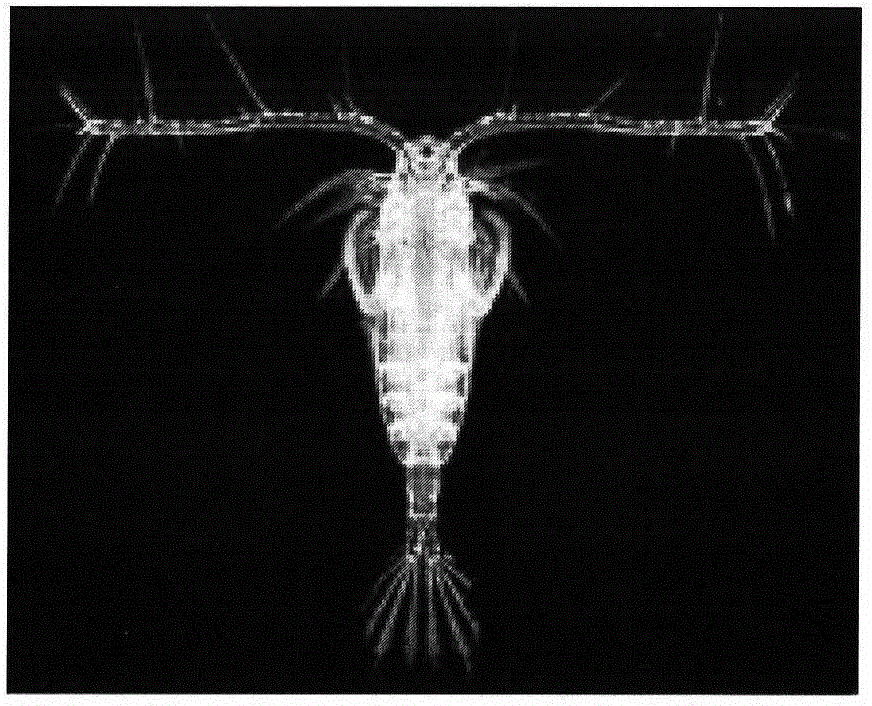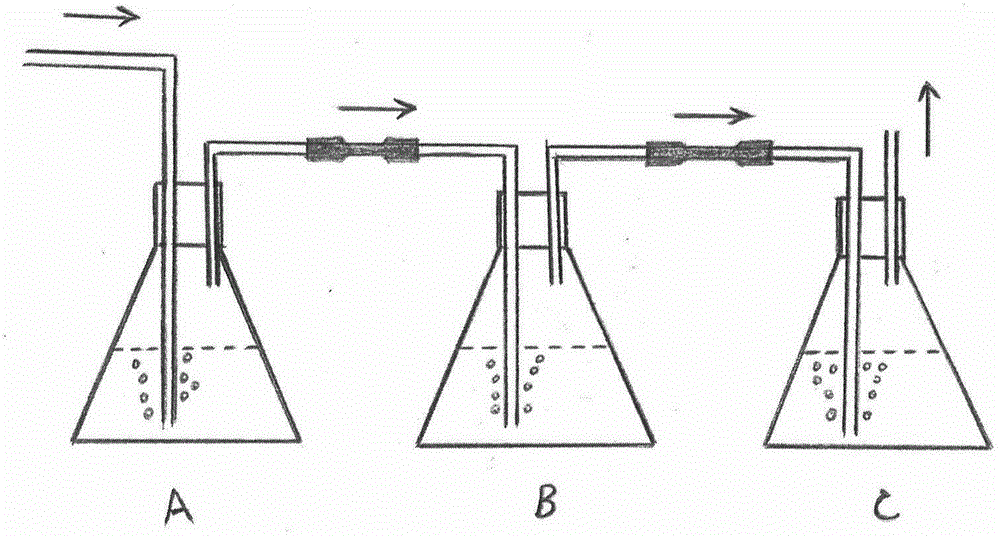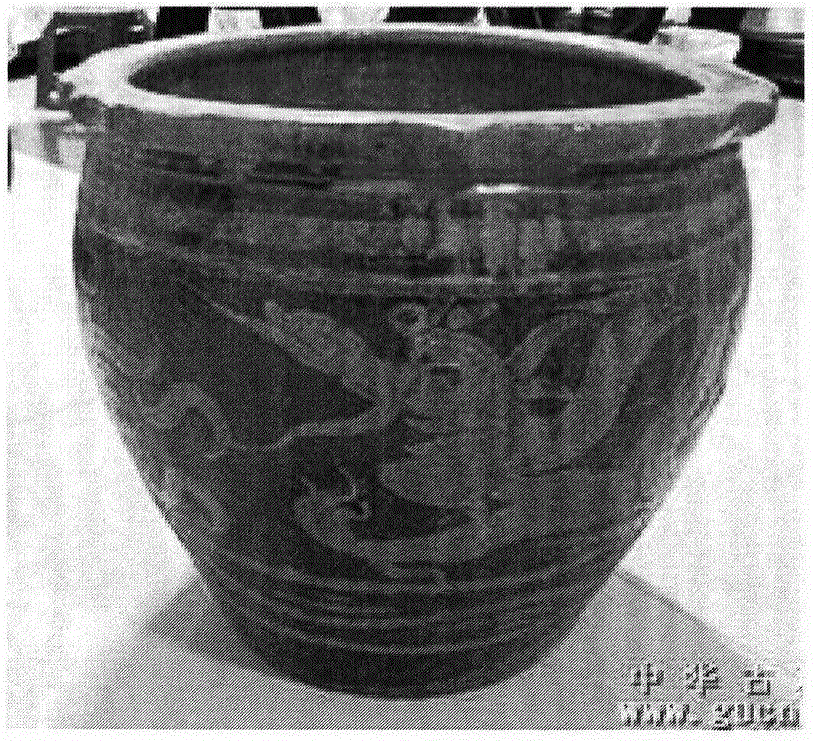Method for breeding calanus finmarchicus with porcelain jar
A technology of Daphnia phegasus and its cultivation method, which is applied in the fields of application, climate change adaptation, single-cell algae, etc., can solve the problems of high operational technical requirements, poor practicability, and easy pollution, so that it is not restricted by seasons, and the operation Convenience, resource and energy saving effects
- Summary
- Abstract
- Description
- Claims
- Application Information
AI Technical Summary
Problems solved by technology
Method used
Image
Examples
Embodiment Construction
[0018] A kind of cultivation method of cultivating Daphnia flying horse with a porcelain jar, the steps are as follows:
[0019] The bait of Daphnia flying horse includes microalgae and bacterial liquid;
[0020] Step 1: Preparation of microalgae as bait for Daphnia fimatis
[0021]The microalgae culture solution is formulated as follows in parts by weight: 0.4 parts of ammonium nitrate, 0.2 parts of ammonium chloride, 0.06 parts of diammonium phosphate, 0.1 part of superphosphate, 0.08 parts of isobutylidene cyclic diurea, and 1.5 parts of sodium bicarbonate , 0.5 parts of potassium sulfate, 0.002 parts of zinc chloride, 0.0001 parts of ammonium molybdate, 0.00001 parts of abscisic acid, 0.03 parts of borax, 0.0004 parts of copper sulfate, 0.1 parts of sodium silicate, 0.00005 parts of Fe-EDTA, 1.2 parts of human urine, boiled 1000 parts of cooled magnetized seawater; take 3 5000ml Erlenmeyer flasks, clean them with a test tube brush, rinse them with distilled water 3 times,...
PUM
 Login to View More
Login to View More Abstract
Description
Claims
Application Information
 Login to View More
Login to View More - R&D
- Intellectual Property
- Life Sciences
- Materials
- Tech Scout
- Unparalleled Data Quality
- Higher Quality Content
- 60% Fewer Hallucinations
Browse by: Latest US Patents, China's latest patents, Technical Efficacy Thesaurus, Application Domain, Technology Topic, Popular Technical Reports.
© 2025 PatSnap. All rights reserved.Legal|Privacy policy|Modern Slavery Act Transparency Statement|Sitemap|About US| Contact US: help@patsnap.com



